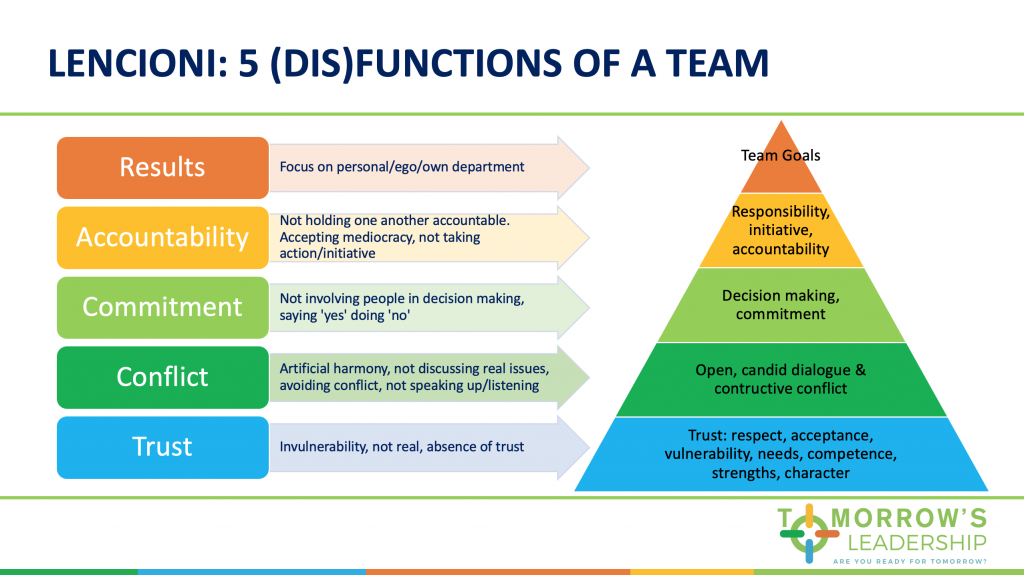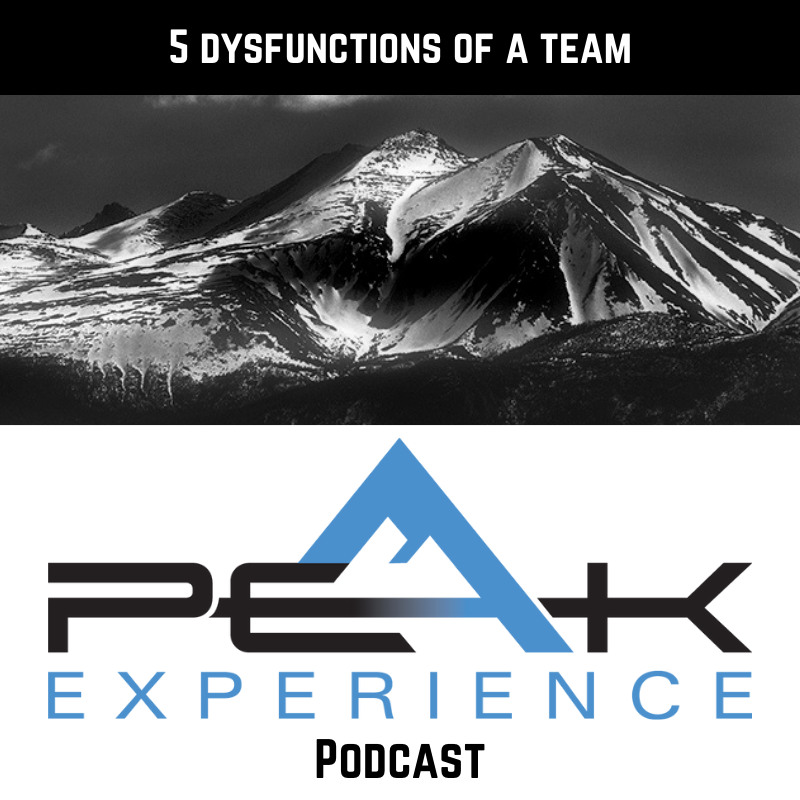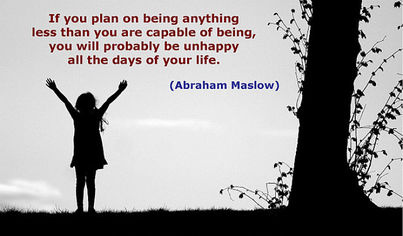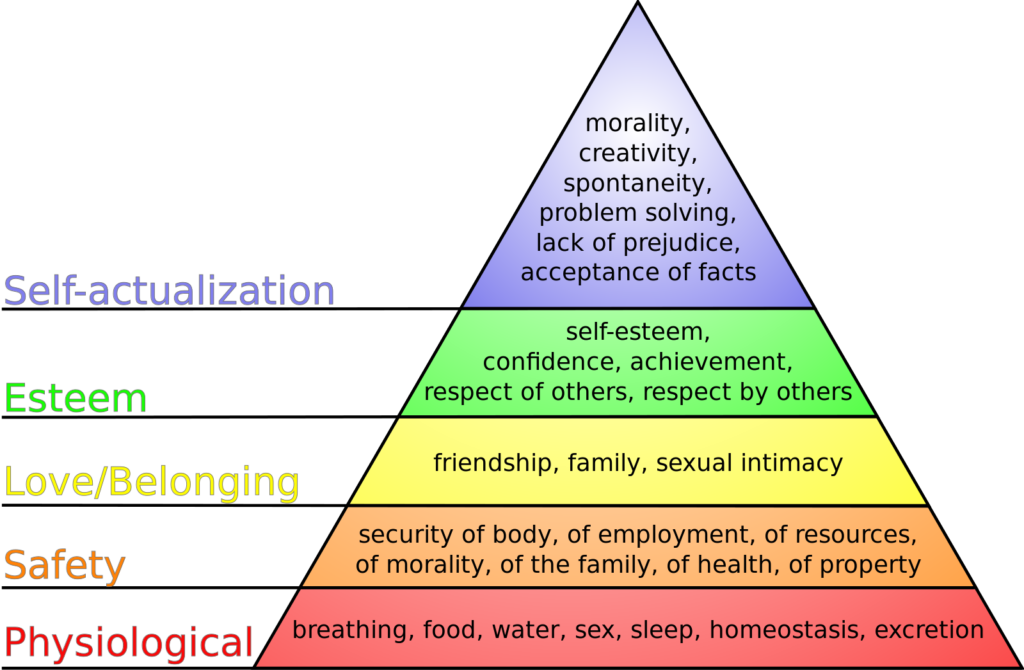Patrick Lencioni examines why effective teams are so rare and provides specific recommendations for eliminating barriers that lead to dysfunctional teams. Lencioni’s work outlines the causes of team dysfunctionality and what can be done to overcome each one.
The five dysfunctions are:
- Absence of Trust. Teams who lack trust conceal weaknesses and mistakes, hesitate to ask for help, jump to conclusions about the intentions of others, hold grudges and dread meetings.
- Fear of Conflict. A lack of trust leads to the fear of conflict. In these companies, employees worry more about politics and personal risk management than solving problems. Meetings are often boring because controversial topics are avoided.
- Lack of Commitment. When teams become conflict-avoidant, a fear of failure develops. These teams have difficulty making decisions and second guess themselves.
- Avoidance of Accountability. Second-guessing and a lack of common objectives then leads to an inability to develop standards for performance. Team members miss deadlines and deliver mediocre work.
- Inattention to results. When teams lack focus and clear objectives, team members stagnate, become distracted, and focus on themselves.
The bottom of the pyramid and the launchpad for all five dysfunctions is an absence of trust. While an absence of trust is something that could have occurred in any company at any time, ensuring trust among your team is more important than ever in today’s work environment. Edelman’s 2021 Trust Barometer shows that the global pandemic has put trust to the test and that none of the societal leaders tracked by Edelman, including government leaders, CEOs, journalists or religious leaders, are trusted to do what is right. 56 percent of respondents believe that business leaders are purposely trying to mislead people; and the credibility of CEOs, Boards of Directors and even regular employees has all dropped.
However, the Trust Barometer also found that although only 12 percent of people will believe communications from employers the first time they hear new information, 49 percent of people will believe it after it is repeated once or twice. All is not lost.
For business leaders, trust and effective communication is possible. As Nancy Kane explains, communication must be thoughtful, and planful, which is as important as ever now that video has become standard. By communicating with humanity, empathy and transparency, leaders can establish cultures of trust, even during times of crisis.



Peak Experience is a nonprofit, independent podcast. We count on donations from you to do this important work.
Scholarly Articles
Harmon, C. S. (2018). Inside a strategic plan for a dysfunctional senior leadership team. Nurse Leader, 16(2), 142-146.
Vaughn, N. H., Hassenbein, S. E., Black, K. P., & Armstrong, A. D. (2019). Important elements in the quality improvement curriculum for orthopaedic residents. JBJS, 101(7), e28.
Kabbur, P. K., Mani, V. S., & Schuelein, J. (2020, June). Prioritizing trust in a globally distributed software engineering team to overcome complexity and make releases a non-event. In Proceedings of the 15th International Conference on Global Software Engineering (pp. 66-70).
Sterling, J. (2020). How leadership teams can face and fix their “undiscussable” dysfunctions. Strategy & Leadership.

Maslow's Hierarchy of Needs
Maslow’s hierarchy of needs is an idea in psychology proposed by American Abraham Maslow in his 1943 paper “A Theory of Human Motivation” in the journal Psychological Review. Maslow subsequently extended the idea to include his observations of humans’ innate curiosity. His theories parallel many other theories of human developmental psychology, some of which focus on describing the stages of growth in humans. He then created a classification system which reflected the universal needs of society as its base and then proceeding to more acquired emotions. Some indigenous academics have speculated that his theories, including the hierarchy, may have been influenced by teachings and philosophy of the Blackfeet tribe, where he spent several weeks doing fieldwork in 1938; however, while this idea has gained attention on social media, there is no evidence to suggest he borrowed or stole ideas for his hierarchy of needs, which he only first published in 1943. The hierarchy of needs is split between deficiency needs and growth needs. While the theory is usually shown as a pyramid in illustrations, Maslow himself never created a pyramid to represent the hierarchy of needs.
The hierarchy of needs is a psychological idea but also a “… valuable assessment tool ….” This tool is utilized in many fields that involve working and taking care of people such as but not limited to: health care workers, educators, social workers, life skill coaches, and many more. Maslow’s hierarchy pyramid is frequently used because it visualizes the needs that one must have met in order to reach self-actualization. This concept was created as Maslow “studied and observed monkeys … noticing their unusual pattern of behavior that addressed priorities based on individual needs.” The two key elements involved within this theory is the individual and the priority, which connects them to intrinsic behavioral motivation.

Robert Forto leaddog@teamineka.com @robertforto
TJ Miller
Michele Forto micheleforto@gmail.com @micheleforto
Peak Experience is a leadership podcast from Dreamchaser Leadership and First Paw Media. The reporting and production is funded in part by listeners just like you. Dreamchaser Leadership is a non-profit organization located in Alaska is a (pending) 501(3)c.
Don’t miss our next podcast
Enter your email below to receive notifications of new episodes and more.

